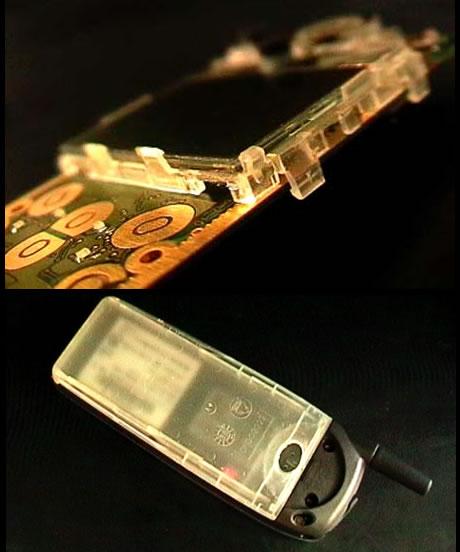
Emerging recycling legislation, demands to get more fractions for recycling, pollution, health and safety issues and cost efficiency are all factors, which require electronic equipment producers to think about new ways to make their products more recyclable.In Nokia, this work is a part of our ongoing Design for Environment (DfE) program, which aims to minimize material and energy use whilst maximize recovery and recycling of our products.
At the moment used mobile phones are mainly shredded in the recycling process. First, the battery is removed manually, then the device is shredded and ferrous metals, aluminum and plastics are separated. The metals are recycled, the plastics are used mainly as a source of energy. Printed wiring boards are handled in metallurgical process. The method goes for all electronic products and is cost effective, but the material recovery is limited. Rough dismantling before shredding could increase the amount of cleaner fractions for recycling.
Nokia Research Center, together with a student group from Helsinki University of Technology, the Finnish School of Watchmaking and the University of Art and Design Helsinki have developed a process for heat disassembly of portable devices. The idea is to disassemble a mobile phone by a heat-activated mechanism without any contact. By using a centralized heat source like laser heating, the shape memory alloy (SMA) actuator is activated, and the mobile phone covers are opened. The battery, display, printed wiring board (PWB) and mechanical parts are separated and can then be recycled in their material specific recycling processes. The required temperature for the disassembly is 60-150 ºC. If it were lower the phone could dismantle by itself, for instance in a hot car, and if it were higher the plastics would melt. Laser heating is a feasible method due to its speed and precision. However, it requires investment in a proper disassembly line.
The heat-activated mechanism is a fast and cheap method if compared to manual dismantling, which takes on average two minutes and costs about 0.3-0.8 , per phone. In the project, the heat-activated disassembly took only two seconds and the only cost is the investment cost in a disassembly line. However, the method still needs to be developed further.
Also, other disassembly methods for electronic equipment are being studied. There are several options, such as dismantling by robots. Recycling processes and business networks need to be developed as well. For instance, plastics should be recovered better than they are at the moment. The rough separation of different fractions brings benefits even though the electronic equipment are still shredded in the future. The separation helps to close the loops for more materials than currently, recycling will increase and mining of raw materials decrease. www.activedisassembly.com www.nokia.com













 RSS feed
RSS feed